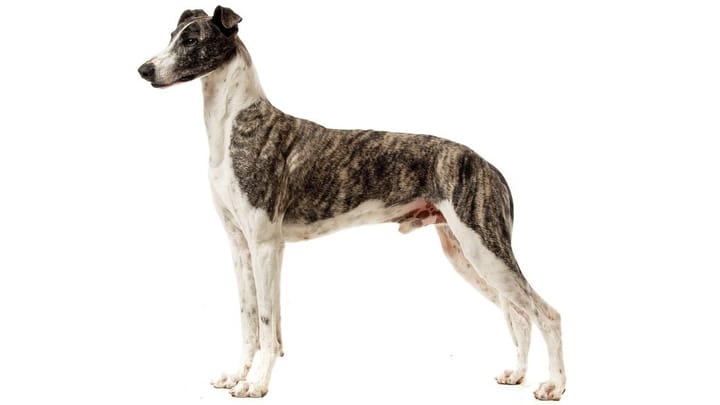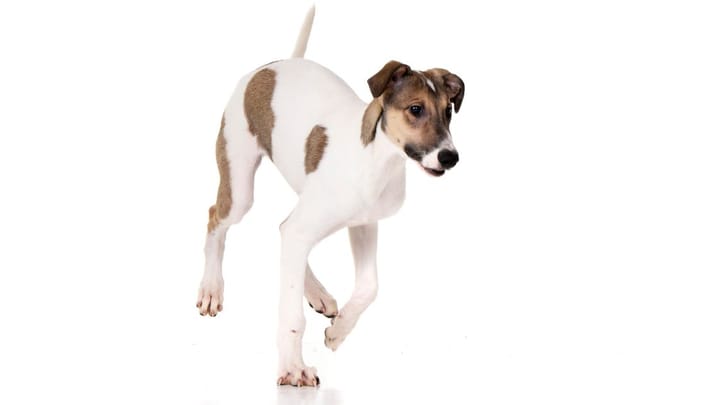Hungarian Greyhound
Other names : Magyar Agar, Hungarian Agar


Although commonly known as the Hungarian Greyhound, the Magyar Agar (AH-gar) is not a direct relative of the common or garden greyhound. They look kind of alike and are both hunting ‘sight hounds,’ but the name is misleading. The Magyar Agar is a complex character of ancient stock, clever, kind, and generally obedient – but a lot depends on the training. In the wrong hands, he will soon become dissatisfied with civilian life which could lead to trouble. Other than that, he tends to be a friendly and sociable addition to the home, and requires a significant amount of exercise each day to keep him trim and happy – making him an ideal partner in crime for a cyclist or jogger.
|
Life expectancy |
The Hungarian Greyhound has a life expectancy of between 13 and 15 years |
|
Temperament |
|
|
Size |
Large
|
|
Adult size |
Female
Between 24 and 26 in
Male
Between 26 and 28 in
|
|
Adult weight |
Female
Between 55 and 66 lb
Male
Between 55 and 66 lb
|
|
Coat colour
Any colour is acceptable except blue, blue-white, brown, wolf-grey, black and tan, or tricolour. |
Black White Red Sand |
|
Type of coat
Dense, coarse, and smooth, with the possibility of a dense undercoat in cold seasons. |
Short |
|
Eye colour
Dark. |
Brown
|
Being a sighthound, the Magyar Agar is among those breeds who are known to respond badly to anaesthesia.
More details about the Hungarian Greyhound
Hungarian Greyhound: Origins and history
The Agár probably followed the native Hungarian Magyars to the region around Transylvania and the Carpathians (in today’s Romania) in the 10th century. He remained a common hunting dog throughout the centuries. Indeed, it is suggested that in Socialist times, these dogs roamed the streets, and hunters might pick one up for a job! Over years of working around mountainous areas and travelling with nomads, the Magyar Agar has become a truly long-range, high-stamina hunter.
Physical characteristics of the Hungarian Greyhound
He looks greyhoundish. But his bones are more substantial. His head has more of a wedge shape, his skin is thicker and his fur denser, to cope with that harsh Hungarian winter. Thus he comes across as stronger, tougher than the classic greyhound. He has a biggish nose for his size, with large, sensual nostrils to keep the air circulating as he runs. Seductive eyes and large, rose ears. See him run in dots, patches, or striped like a tiger: the Magyar Agar will not be pinned down, aesthetically!
FCI classification of the Hungarian Greyhound
-
Group 10 - Sighthounds
-
Section 3 : Short-haired Sighthounds
Hungarian Greyhound: Characteristics
Hungarian Greyhound: Behaviour
Training a Hungarian Greyhound
The education of greyhounds must always be delicate, gentle and positive to achieve great results. Brutality and violence absolutely do not work and make these dogs very unhappy.
Hungarian Greyhound: Lifestyle
Breed compatibility Hungarian Greyhound
Hungarian Greyhound: Purchase price
We do not have enough data to set an average price. Looking after a dog of this size typically costs between £50 to £100 a month, including food, medical/insurance, and incidental expenses.
Hungarian Greyhound: Shedding
Light
Light shedder.
Hungarian Greyhound: Grooming
Weekly brushing and occasional baths will keep this generally hygienic dog clean.
Hungarian Greyhound: Health
A generally healthy breed, with an average life expectancy of 14 years.
This is a robust and hardy outdoors model.
His coat adapts with the seasons. He should avoid over-exertion during a heat wave.
He’s pretty tough about handling cold weather.
This dog will put on weight only if under-exercised.
- Hip/elbow dysplasia
- Hypothyroidism
- Gastric dilation volvulus (bloat)
- Progressive retinal atrophy
- Epilepsy





